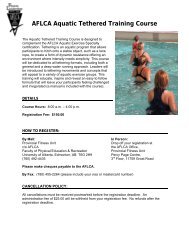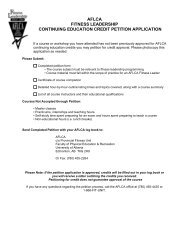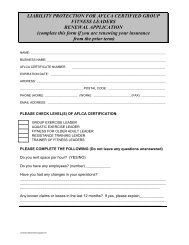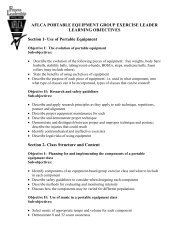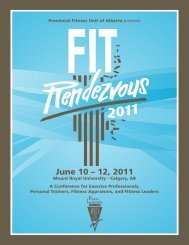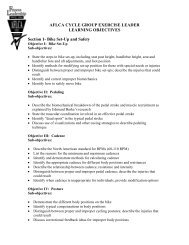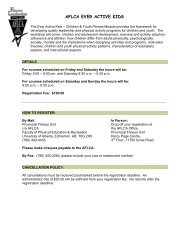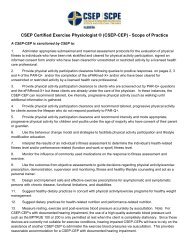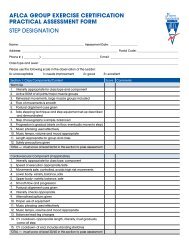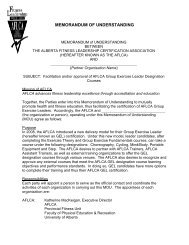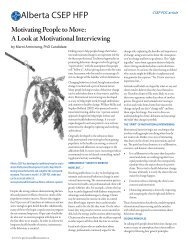AFLCA EXERCISE THEORY STUDY QUESTIONS These questions ...
AFLCA EXERCISE THEORY STUDY QUESTIONS These questions ...
AFLCA EXERCISE THEORY STUDY QUESTIONS These questions ...
Create successful ePaper yourself
Turn your PDF publications into a flip-book with our unique Google optimized e-Paper software.
6. Intensity is:<br />
a) the length of time spent on each activity<br />
b) the number of times a specific activity is performed<br />
c) the percentage of maximum capacity one is working at<br />
d) how tired you feel after and activity<br />
7. Muscle action where the muscles surrounding a joint are stretched by the force<br />
generated as a body part is repeatedly moved is this stretching technique.<br />
a) static stretching<br />
b) dynamic stretching<br />
c) PNF stretching<br />
d) active stretching<br />
8. This type of synovial joint can move in three perpendicular planes of motion.<br />
a) pivot joint<br />
b) saddle joint<br />
c) condyloid joint<br />
d) ball and socket joint<br />
9. Which of the following muscles does not belong to the rotator cuff?<br />
a) supraspinatus<br />
b) infraspinatus<br />
c) teres minor<br />
d) trapezius<br />
10. Which is the true statement?<br />
a) the left side of the heart pumps oxygen rich blood to the tissues throughout<br />
the body<br />
b) the right side of the heart pumps oxygen rich blood to the tissues throughout<br />
the body<br />
c) the left side of the heart pumps oxygen depleted blood through the lungs<br />
d) the right side pumps oxygen depleted blood to the tissue throughout the body<br />
11. Which of the following is not a common symptom of the beginnings of<br />
overtraining?<br />
a) sore and stiff muscles<br />
b) muscular hypertrophy<br />
c) elevated resting heart rate<br />
d) poor quality training sessions



